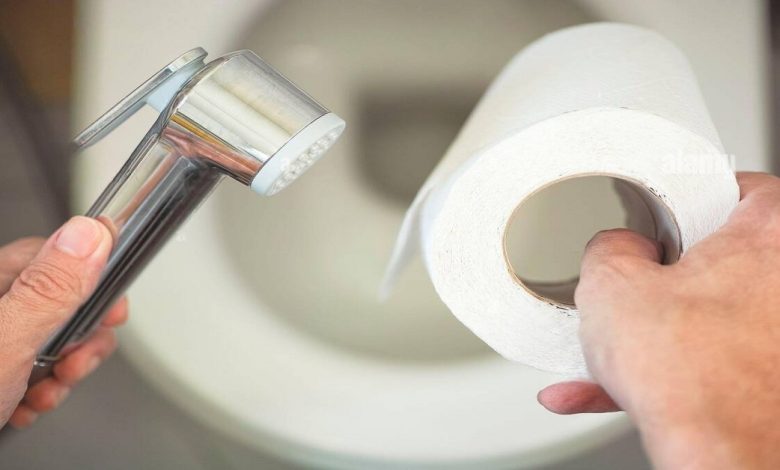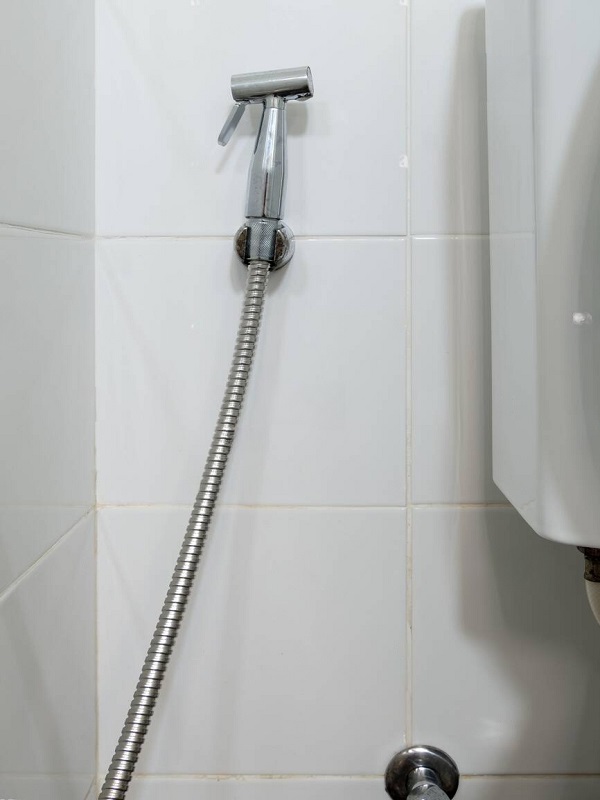
Introduction
In many parts of the world, using a toilet without any cleaning mechanism is still the norm. People have used toilet paper to clean themselves after using the bathroom for centuries. Still, there are more effective ways to maintain good hygiene. Fortunately, an alternative is gaining popularity in many countries – the shatafa, also known as a bidet spray or handheld bidet. Shatafa is a device that sprays water to clean the private parts after using the bathroom. While shatafa may be a new concept for some, it has been used in parts of Asia and the Middle East for centuries. This article will explore the benefits of using shatafa for women’s health and hygiene.
Shatafa is a device that sprays water to clean the private parts after using the bathroom. It has gained popularity in many countries as an alternative to toilet paper. In this article, the benefits of using shatafa for women’s health and hygiene will be explored. Also, some common concerns about using the device will be adressed.
Improved Feminine Hygiene: Hepling Women Stay Clean and Fresh
Maintaining feminine hygiene is crucial for every woman, regardless of age or lifestyle. Women are prone to several infections, including urinary tract infections (UTIs), yeast infections, and bacterial vaginosis (BV). While several factors contribute to these infections, poor hygiene is significant. Using toilet paper to clean the private parts after using the bathroom is insufficient. It may not effectively remove all the bacteria and germs. In contrast, using a shatafa can ensure thorough cleaning, leaving the area clean and fresh.
Some women may have concerns about using shatafa, such as the risk of infection or the cleanliness of the device. However, using shatafa is generally safe and hygienic if proper precautions are taken. Using clean water and cleaning the device regularly with soap and water is recommended. Also, shatafa can be used alongside toilet paper, if desired, for optimal hygiene. Suppose you have any concerns or questions about using shatafa. In that case, it is best to consult a healthcare professional or a trusted source of information.
Reducing the Risk of Infections: The Hygienic Benefits

Besides improved hygiene, using a shatafa can reduce the risk of several infections. Studies have shown that shatafa can reduce the likelihood of UTIs and other infections. The gentle stream of water can remove any bacteria that may have remained after using the bathroom, reducing the risk of infections.
Using a shatafa can significantly reduce the risk of infections, providing women with a safe and hygienic way to clean their private areas. Unlike toilet paper, which can leave residue and cause irritation, a shatafa sprays water to clean the area thoroughly. It helps remove bacteria and prevent the spread of infections, which is especially important for women prone to UTIs or other vaginal infections. In addition, using a shatafa can also reduce the risk of fecal contamination, which can lead to bacterial infections such as E. coli. By promoting proper cleaning, shatafa helps to maintain the delicate balance of microorganisms in the genital area, which is essential for good vaginal health. Moreover, shatafa can be particularly helpful during menstruation when women are more susceptible to infections. Overall, by using a shatafa for personal hygiene, women can reduce the risk of infections and promote a healthier, more comfortable, and hygienic lifestyle.
Say Goodbye to Irritation: How Shatafa Can Help Soothe Sensitive Skin
Many women experience irritation and discomfort in the private area for various reasons, such as wearing tight clothing, sweating, or using harsh chemicals. Using toilet paper can worsen the irritation, as the friction may further irritate the skin. In contrast, using a shatafa can help soothe sensitive skin. The gentle stream of water can help reduce inflammation and irritation, leaving the skin feeling clean and refreshed.
Hemorrhoids, also known as piles, are common among women, especially during pregnancy and after childbirth. Hemorrhoids can cause discomfort, pain, and bleeding, often caused by straining during bowel movements. Using a shatafa can help reduce the risk of hemorrhoids by promoting proper cleaning and reducing the need for straining. Also, shatafa can help prevent anal fissures and small tears in the anus that can cause pain and bleeding.
Eco-Friendly and Cost-Effective: The Advantages of Using a Shatafa for Feminine Care
Using shatafa for feminine care is beneficial for personal hygiene, the environment, and the wallet. In contrast to using toilet paper, shatafa is eco-friendly, as it does not contribute to waste. Also, using shatafa can save money in the long run, as the device is durable and long-lasting, reducing the need to purchase toilet paper.
The Importance of Proper Hygiene During Menstruation
Proper hygiene is crucial during menstruation to prevent infections and maintain good health. Women who use sanitary pads or tampons can benefit from using a shatafa during menstruation. Shatafa can ensure thorough area cleaning, reducing the risk of infections. Also, using shatafa can help women feel clean and comfortable during menstruation.
Pregnancy and postpartum care require extra attention to hygiene as the body undergoes several changes that can increase the risk of infections. Using a shatafa can be an effective way to maintain cleanliness and comfort during these stages. Shatafa can help reduce the discomfort and itching associated with hemorrhoids and promote healing after childbirth. Moreover, shatafa is safe and easy to use, even for women undergoing medical procedures or having limited mobility.
Read more: An Ultimate Guide About 15 Best Necklines For Broad Shoulders In 2023
Shatafa Improves Eliminating Odors and Discomfort For Well-Being
Women who experience odor and discomfort due to poor hygiene can benefit from shatafa. Shatafa can ensure proper cleaning of the private area, eliminating any odor-causing bacteria.
Using a shatafa can be more comfortable and convenient than using toilet paper. For women who experience discomfort during menstrual periods or after childbirth, using a shatafa can be a gentle and soothing way to clean the private area. Also, shatafa is easy to use and requires no special skills or knowledge, making it an accessible and convenient option for women of all ages.
More Control and Customization: The Versatility of Shatafa
One of the main advantages of using shatafa is the control and customization it offers. Unlike toilet paper, which can be rough or insufficient, shatafa allows users to adjust the water pressure and temperature to their liking. Also, shatafa can be used for different purposes, such as cleaning the anus, feet, or even the bathtub or sink. This versatility makes shatafa a practical and cost-effective addition to any household.
The Convenience of Using for Feminine Care: Easy, Quick, and Effective
Using a shatafa for feminine care offers a convenient and effective alternative to traditional methods such as toilet paper. Shatafa is easy to use, quick, and efficient, making it an ideal option for women who are always on the go or have a busy lifestyle. With a button push, the shatafa can spray water and clean the genital area, providing instant cleanliness and freshness. Moreover, shatafa is eco-friendly, as it does not require any toilet paper, which can be wasteful and harmful to the environment. Using shatafa for feminine care can also reduce the need for frequent visits to the bathroom, as it provides a thorough cleaning that can last for several hours. It makes it an ideal option for women traveling, at work, or in other situations where bathroom breaks may be limited. By providing a convenient and effective alternative to traditional feminine care methods, shatafa promotes a more comfortable, hygienic, and eco-friendly lifestyle.
Empowering Women’s Health: The Positive Impact of Shatafa on Body Confidence
Using a shatafa can positively impact women’s body confidence by promoting cleanliness and comfort. Many women may feel self-conscious or uncomfortable with their bodies, especially during menstruation or after childbirth. However, using a shatafa can provide a sense of cleanliness and freshness, reducing any feelings of discomfort or embarrassment. It can also help to alleviate any physical discomfort or irritation that may result from using toilet paper. By feeling more confident and comfortable, women may be more likely to engage in physical activity, socialize, and enjoy their day-to-day activities.
Moreover, using a shatafa can promote a more positive relationship with one’s body, encouraging self-care and respect. By taking control of one’s hygiene, women can empower themselves and feel more confident in their daily lives. Overall, the positive impact of shatafa on women’s health and hygiene can extend beyond the physical benefits, contributing to a healthier and more confident lifestyle.
Breaking Taboos: Overcoming Cultural Barriers to Embrace its Benefits
In many cultures, the use of shatafa for feminine hygiene is not widely accepted due to cultural and religious taboos surrounding cleaning private parts. However, shatafa can provide significant health and hygiene benefits for women. Breaking these taboos is essential for promoting better health practices. Educating women on the benefits of shatafa and addressing cultural misconceptions can empower them to embrace this hygienic practice. One way to break these taboos is through community education and awareness campaigns that promote the use of shatafa for feminine hygiene. These campaigns can help to normalize shatafa use and overcome any cultural barriers that may exist. Additionally, involving religious leaders and community influencers in these campaigns can help to promote the acceptance of shatafa use and provide a platform for discussing the importance of feminine hygiene. By breaking cultural barriers and embracing the benefits of shatafa, we can promote better health practices for women, empower them to take control of their hygiene and help to reduce the risk of infections and other health problems.
Promoting Sustainability: How Shatafa Can Reduce Environmental Impact and Waste
Using shatafa for women’s health and hygiene is more than just a personal choice – it is a step forward for promoting awareness and acceptance of different cultural practices.
Shatafa provides numerous health and hygiene benefits for women, promotes sustainability, and reduces environmental impact. Traditional methods of feminine care, such as toilet paper, can be wasteful and harmful to the environment. In contrast, shatafa requires no toilet paper and uses only water, making it an eco-friendly alternative. By reducing the amount of waste produced by traditional feminine care methods, shatafa can help reduce feminine hygiene’s environmental impact. Furthermore, shatafa’s water-saving design ensures that it uses minimal water, another important aspect of promoting sustainability. As more and more people become aware of the importance of sustainability, shatafa provides a convenient and eco-friendly option for promoting feminine hygiene while reducing environmental impact and waste.
Final Words
Using shatafa for women’s health and hygiene provides numerous benefits. It promotes cleanliness, reduces the risk of infections, and improves feminine care. Shatafa is also convenient and eco-friendly, offering a quick and effective alternative to traditional feminine care methods. Moreover, embracing the use of shatafa can empower women to take control of their hygiene and break cultural taboos surrounding cleaning private parts. By promoting the use of shatafa and addressing cultural misconceptions, we can help women to live healthier, more comfortable lives. Overall, shatafa is an essential tool for promoting feminine hygiene and empowering women to take control of their health and well-being.
Apart from it, if you are interesting to read an amazing article on the best internal bleeding Hemorrhoid treatment?, then visit our Health category.
Frequently Asked Questions (FAQs)
· Is using shatafa safe for women’s health?
Yes, shatafa is generally safe for women’s health if proper hygiene and usage guidelines are followed. Using clean water and cleaning the device regularly with soap and water is important. Suppose you have any concerns or questions about using this device. In that case, it is best to consult a healthcare professional or a trusted source of information.
· Can the use of shatafa cause infections or other health problems?
Using shatafa does not cause infections or other health problems in and of itself. However, improper hygiene usage can increase the risk of infections or irritation. Using clean water and cleaning the device regularly with soap and water is important. Suppose you have any concerns or questions about using shatafa. In that case, it is best to consult a healthcare professional or a trusted source of information.
· Is using shatafa more hygienic than using toilet paper?
Yes, using shatafa can be more hygienic than using toilet paper as it allows for more thorough cleaning of the private area. Shatafa sprays water to clean the area, while toilet paper can leave residue or irritate the skin.



